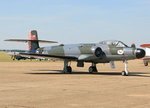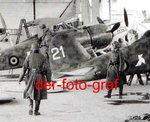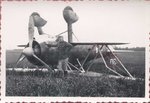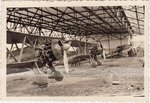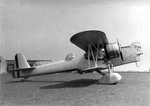Navigation
Install the app
How to install the app on iOS
Follow along with the video below to see how to install our site as a web app on your home screen.
Note: This feature may not be available in some browsers.
More options
You are using an out of date browser. It may not display this or other websites correctly.
You should upgrade or use an alternative browser.
You should upgrade or use an alternative browser.
Belgium Air Force
- Thread starter gekho
- Start date
Ad: This forum contains affiliate links to products on Amazon and eBay. More information in Terms and rules
More options
Who Replied?AARP Hurricane
Airman
AARP Hurricane
Airman
- Thread starter
- #24
In 1934, the Belgian Air Force drew up a specification for a multi-purpose bomber and long-range reconnaissance aircraft, which could also act as a heavy fighter. To meet this requirement, designs were produced by Les Atelier de Constructions Aéronautiques Belges (LACAB) and by Stampe et Vertongen (the Stampe SV-10).
The LACAB design was a twin engined biplane of mixed construction, with a slab-sided steel tube fuselage with plywood and fabric covering and wooden, two-bay un-equal span wings. It was powered by two Gnome-Rhône Mistral Major radial engines mounted between the wings, and was fitted with a fixed tailwheel undercarriage. Manually operated gun turrets, each mounting two machine guns, were mounted in nose and dorsal positions, while a further two guns were in a ventral position. The sole prototype first flew on 14 May 1936, being handed over to the Belgian Air Force for testing on 2 July 1936. The Spanish Republican Air Force attempted to buy the prototype LACAB GR.8, but the international arms embargo prevented delivery to Spain. The prototype was badly damaged in a landing accident on 4 April 1938 with its undercarriage and starboard wings destroyed. Although the aircraft was repaired, it was not flown again, and no production was undertaken, with the GR.8 being scrapped after the German invasion of Belgium in May 1940.
The LACAB design was a twin engined biplane of mixed construction, with a slab-sided steel tube fuselage with plywood and fabric covering and wooden, two-bay un-equal span wings. It was powered by two Gnome-Rhône Mistral Major radial engines mounted between the wings, and was fitted with a fixed tailwheel undercarriage. Manually operated gun turrets, each mounting two machine guns, were mounted in nose and dorsal positions, while a further two guns were in a ventral position. The sole prototype first flew on 14 May 1936, being handed over to the Belgian Air Force for testing on 2 July 1936. The Spanish Republican Air Force attempted to buy the prototype LACAB GR.8, but the international arms embargo prevented delivery to Spain. The prototype was badly damaged in a landing accident on 4 April 1938 with its undercarriage and starboard wings destroyed. Although the aircraft was repaired, it was not flown again, and no production was undertaken, with the GR.8 being scrapped after the German invasion of Belgium in May 1940.
Attachments
Nice shots!
The weird and wonderful continues....
excellent, but some weird looking birds though!
excellent, but some weird looking birds though!
Last edited by a moderator:
vikingBerserker
Lieutenant General
Excellent
Users who are viewing this thread
Total: 1 (members: 0, guests: 1)
Similar threads
- Replies
- 4
- Views
- 571

